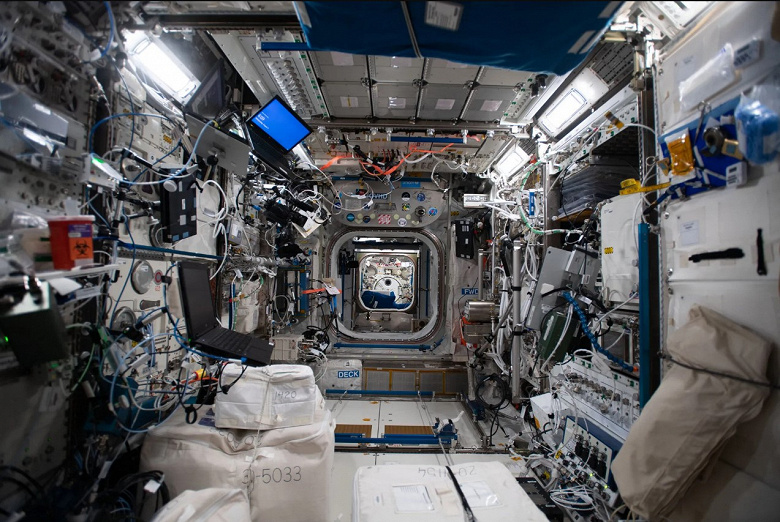The International Space Station fills with dust. Not space dust, but domestic dust: skin flakes, clothing fibers… and toxic chemicals.
An analysis of samples taken from the ISS has shown that dust on board contains elevated levels of several potentially harmful types of chemicals, including so-called “timeless chemicals”, compared to dust in homes on Earth.
To study what astronauts breathe, the researchers analyzed the contents of vacuum bags from the ISS that were returned to Earth. The bags are filled with cabin dust, metal particles, clothing fibers, hair, skin flakes and other debris. The study was part of an experiment called “Divert Unwanted Space Trash” (DUST), which studies the behavior of matter in zero gravity.

The share of some substances exceeds their content in house dust. These include perfluorooctanoic acid (PFOA), a compound often found in non-stick coatings, food packaging, and fire-fighting foam. On the space station, PFOA levels were about 3.3 ppm. By comparison, the highest level recorded in US homes in 2008 was about 2 parts per million.
Dust on the ISS is polluted with toxic substances
By analyzing the dust, the researchers found several types of organic pollutants. These include organic organophosphoric acid esters (OPEs) and brominated combustible flame retardants (BFRs), chemicals used for fire safety in building insulation, furniture fabrics, carpets and hardening foam. It is an integral part of the space station, as it is used to pack and protect items from strong vibrations when delivering packages to orbit.
One surprise in the dust on the ISS was a class of compounds called polychlorinated biphenyls (PCBs). PCBs can be found in old homes on windows, sealants, and electrical equipment, but they were banned in the United States as early as 1979. The researchers speculate that these substances may be due to dyes and dyes in items sent on board.
The study also identified polycyclic aromatic hydrocarbons (PAHs) found in hydrocarbon fuels and emitted during combustion, perfluoroalkyl compounds (PFASs), better known as “timeless chemicals” used in the dyeing of clothing and other fabrics, and polybrominated diphenyl ethers. (PBDEs) that could have appeared on the ISS due to the use of inorganic flame retardants in composites and fabrics.




